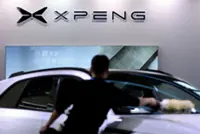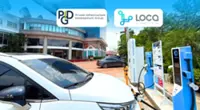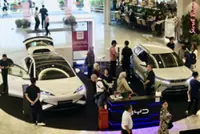A car gets charged at the new Electrify America indoor electric vehicle charging station in San Francisco. By the end of 2023, every fast-charging cord in the country was plugged in for an average of nearly five hours a day. — AP
When it comes to electric vehicle charging in the US, the cars are finally catching up to the cords.
Last year, the average utilisation of a US fast-charging station not operated by Tesla Inc doubled – from 9% in January to 18% in December, according to new data from Stable Auto Corp, a San Francisco startup that helps companies place EV infrastructure.





